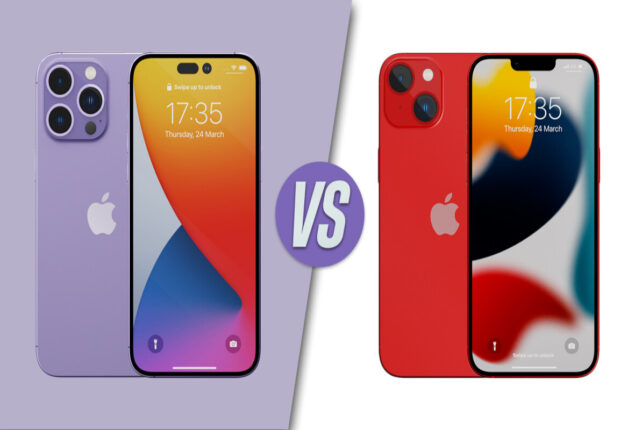
Introduction:
In the ever-evolving world of smartphones, Apple has been at the forefront of innovation and design. With each new iteration, they aim to push the boundaries of technology and provide users with an enhanced experience. In this blog, we will delve into the key differences between the widely anticipated iPhone 14 and its successor, the iPhone 15. Let’s explore what Apple has in store for us.
- Design:
The iPhone 14 introduced a significant design overhaul, featuring a flat-edged design reminiscent of the iPhone 4. However, with the iPhone 15, Apple takes it further by refining the design language. It is expected to feature a slimmer profile, reduced bezels, and possibly a smaller notch or even a hole-punch display, offering a more immersive viewing experience. - Display:
While both the iPhone 14 and iPhone 15 are expected to sport Super Retina XDR displays, the iPhone 15 may feature a higher refresh rate, possibly 120Hz or even 144Hz. This would result in smoother scrolling, improved responsiveness, and an overall more fluid user interface. - Performance:
Apple’s A-series chips have consistently raised the bar in terms of performance, and the iPhone 14 and iPhone 15 are no exception. The iPhone 14 is expected to feature the A16 Bionic chip, offering faster processing speeds, improved energy efficiency, and enhanced AI capabilities. The iPhone 15, on the other hand, might introduce the highly anticipated A17 Bionic chip, taking performance to even greater heights. - Camera:
Apple has always placed great emphasis on the camera capabilities of their iPhones, and the iPhone 14 and iPhone 15 are expected to build upon this legacy. The iPhone 14 may feature significant camera improvements, including larger sensors, improved low-light performance, and enhanced computational photography. With the iPhone 15, we can expect further advancements, such as improved optical zoom, enhanced video recording capabilities, and possibly even a new camera sensor configuration. - Connectivity:
The iPhone 14 is anticipated to introduce 5G connectivity across all models, providing faster download and upload speeds. The iPhone 15 may take this a step further by supporting the next-generation 5G technology, offering improved network reliability, reduced latency, and enhanced overall connectivity. - Battery Life:
Battery life has always been a crucial aspect of any smartphone, and Apple aims to enhance it with each new release. The iPhone 14 is expected to bring improvements in battery efficiency, allowing for longer usage on a single charge. The iPhone 15 may take advantage of advanced battery technologies, potentially introducing longer battery life and faster charging capabilities.
Conclusion:
The iPhone 14 and iPhone 15 represent the next steps in Apple’s relentless pursuit of innovation and user experience. While the iPhone 14 brings a fresh design and notable improvements across various aspects, the iPhone 15 takes it a step further with refined design elements, enhanced performance, camera advancements, and improved connectivity. Ultimately, the choice between the two will depend on individual preferences and priorities. Regardless of which model you choose, both the iPhone 14 and iPhone 15 are expected to offer unparalleled performance and a host of exciting features to elevate your smartphone experience.




